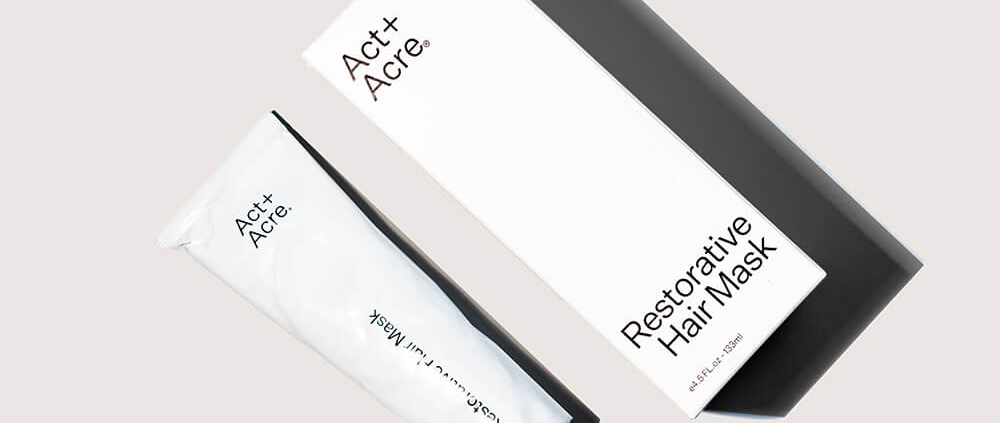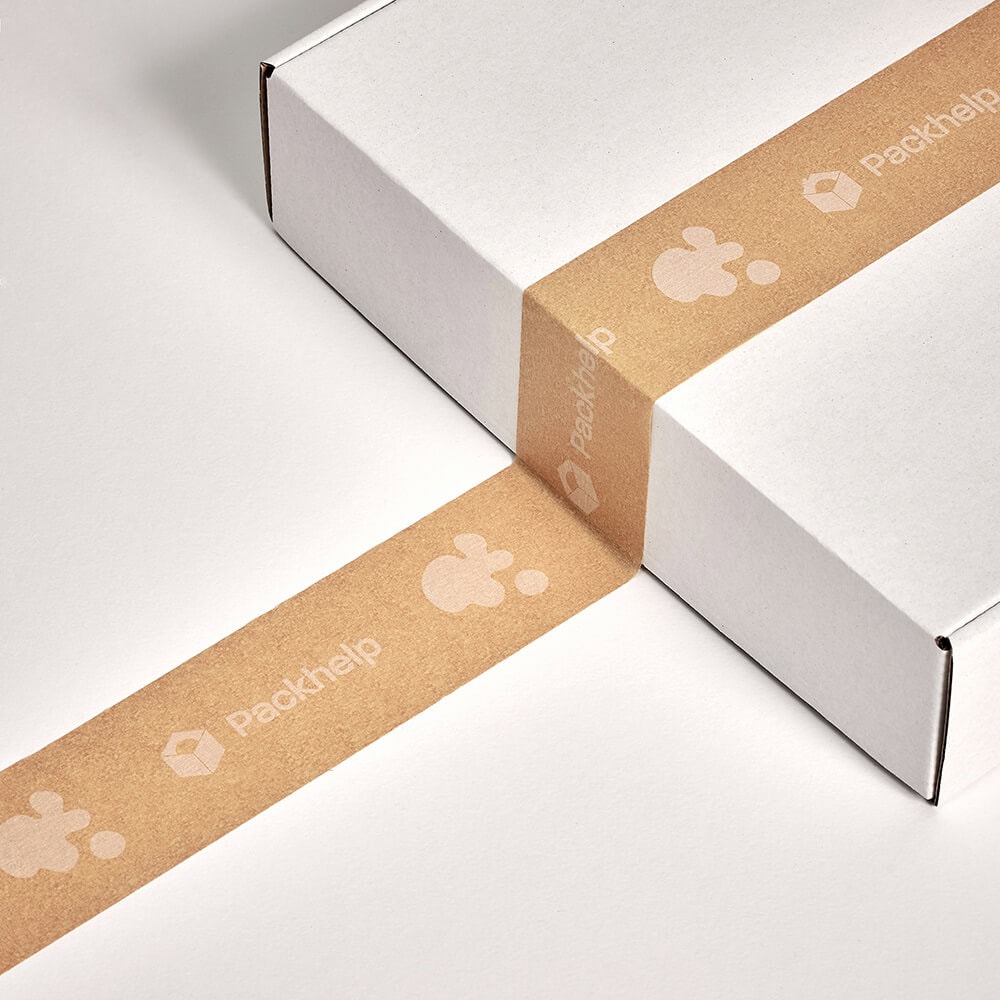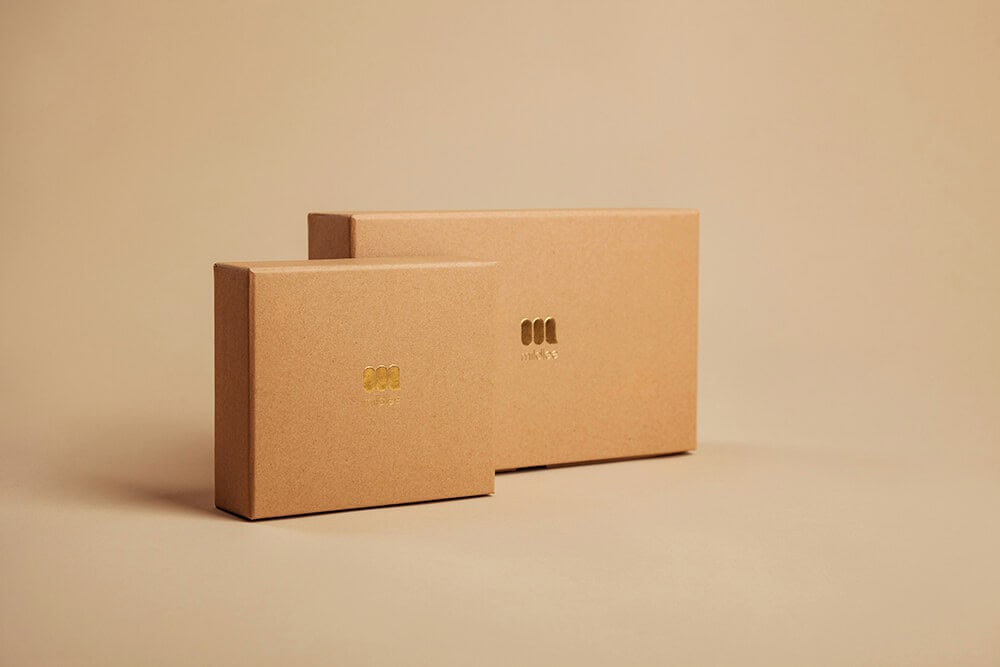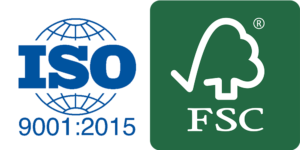Secondary Packaging: Why It Matters for Cosmetics
When it comes to cosmetics, first impressions matter—and that’s where packaging plays a pivotal role.
But while primary packaging (the product container itself) gets a lot of attention, secondary packaging is just as crucial, often making the difference between a memorable brand experience and a forgettable one. So, what exactly is secondary packaging, and why should it matter to your cosmetic brand?
Secondary packaging is the outer layer that protects, organizes, and presents your product to the world.
From folding cartons to luxury rigid gift boxes, paper tubes, and even eco-friendly paper bags, the options for secondary packaging are as diverse as the cosmetic products they hold.
Not only does it serve a functional purpose, such as safeguarding your products during shipping, but it also helps establish your brand identity and connect with consumers on an emotional level.
In today’s eco-conscious market, sustainability is a top priority for both brands and consumers.
Whether you’re choosing between primary vs. secondary packaging or looking for sustainable secondary packaging solutions, understanding how these choices impact both your bottom line and your brand image is key.
In this post, I’ll dive into the world of secondary packaging, explore its role in protecting your products, and discuss why it’s essential for creating a lasting impression.
Plus, I’ll highlight some of the best eco-friendly options to help you make packaging choices that align with both your brand and sustainability goals.
Ready to dive in? Let’s get started!
1. What Is Secondary Packaging and How Does It Differ from Primary Packaging?
Secondary packaging refers to the packaging that surrounds the primary packaging of a product, often serving as an outer layer to protect, organize, or promote the product.
In the cosmetics industry, primary packaging typically refers to the container or bottle holding the product itself, such as a perfume bottle, foundation tube, or jar of moisturizer.
Secondary packaging, on the other hand, is the box, wrapper, or outer carton that houses and protects the primary packaging.
It’s important to note that while the primary packaging is focused on containing and dispensing the product, secondary packaging offers added protection, branding opportunities, and a more organized presentation.
The key difference is that primary packaging is essential for the product’s function, while secondary packaging serves more of a functional and marketing role, such as protecting the primary packaging during transportation or enhancing the product’s shelf appeal.
2. The Role of Secondary Packaging in Protecting Your Cosmetic Products
One of the primary functions of secondary packaging is to provide additional protection during the distribution process.
Cosmetics, especially glass bottles or delicate items like serums or creams, can be prone to damage if not properly packed.
Secondary packaging ensures that your products are cushioned and protected from impacts, moisture, and light exposure, keeping them safe until they reach the retailer or consumer.
For example, if you’re shipping a high-end skincare serum in a glass bottle, the secondary packaging (a sturdy box or outer carton) can prevent breakage and protect the product from temperature fluctuations.
It also prevents damage to labels or outer surfaces that could impact the visual appeal when the product is opened by the customer.
In short, secondary packaging plays a crucial role in maintaining the integrity of your cosmetic products through their journey from the manufacturer to the consumer.
3. How Secondary Packaging Enhances the Consumer Experience
Secondary packaging is not just about protection—it’s also an integral part of the customer’s experience when they purchase and unbox a product.
Well-designed secondary packaging can elevate the consumer experience by adding a touch of luxury or creating excitement around the brand.
For cosmetics, this is especially important because packaging is often linked to the perception of quality.
Think of a high-end lipstick, where the secondary packaging (a beautifully designed box) makes the customer feel special when opening it.
The texture, colors, and details of the box can set the tone for the product’s perceived value and brand story.
Beyond the unboxing moment, secondary packaging can provide useful information like product instructions, ingredients, and brand storytelling, which can create a deeper connection with the brand. Overall, secondary packaging is a key player in turning a simple product into an unforgettable experience.
4. Secondary Packaging and Brand Identity: Why Packaging Choices Matter
Secondary packaging is one of the most effective tools for reinforcing brand identity.
For cosmetics, where aesthetic appeal plays a huge role in consumer decision-making, packaging is often just as important as the product itself.
Through strategic use of secondary packaging, brands can communicate their values, vision, and personality.
For instance, luxury cosmetics brands may use sleek, minimalistic boxes or embossed details to evoke a sense of elegance and exclusivity.
In contrast, eco-friendly cosmetic brands might opt for recycled or biodegradable secondary packaging to emphasize their commitment to sustainability.
Secondary packaging allows you to make a lasting impression by aligning your product packaging with your brand’s messaging. Whether it’s through colors, typography, texture, or logo placement, every detail contributes to creating a visual identity that attracts and retains customers.
5. Sustainable Secondary Packaging: Eco-Friendly Options for Cosmetic Brands
As consumers become more environmentally conscious, the demand for sustainable packaging has skyrocketed.
Cosmetic brands, in particular, are under increasing pressure to reduce their environmental impact and adopt eco-friendly practices.
One area where this shift is especially noticeable is in secondary packaging, where brands can make a significant difference by choosing materials and designs that minimize waste and maximize recyclability.
When it comes to eco-friendly secondary packaging for cosmetics, paper packaging is an excellent choice.
It’s biodegradable, recyclable, and can be sourced sustainably, making it a great alternative to plastics or other materials that contribute to pollution.
Let’s take a closer look at some of the most popular paper packaging options that cosmetic brands can use to create sustainable, attractive, and functional secondary packaging.
5.1. Folding Cartons: A Versatile and Recyclable Option
Folding cartons are one of the most widely used secondary packaging options for cosmetics due to their versatility and recyclability.
Made from sturdy paperboard, folding cartons can be printed with high-quality graphics and are easily customizable to fit the needs of different cosmetic products.
From skincare creams to perfumes and lipsticks, folding cartons can protect products while showcasing the brand’s aesthetic.
What makes folding cartons particularly sustainable is their recyclability.
Most paperboard used for folding cartons is made from renewable resources and can be recycled into new paper products after use.
Additionally, many manufacturers are now using FSC-certified (Forest Stewardship Council) paper, ensuring that the paper comes from responsibly managed forests, further improving the sustainability of the packaging.
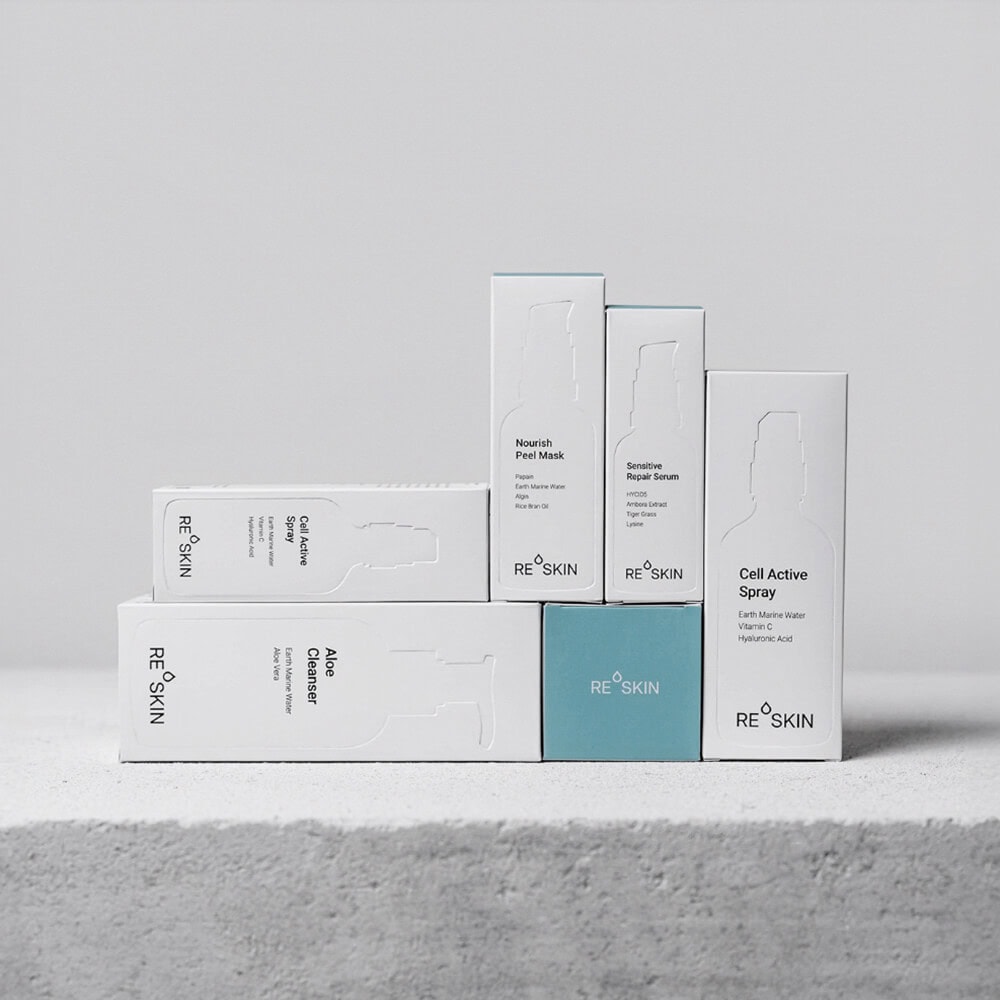
Elegant white serum packaging with bold debossed branding, perfect for high-end skincare lines.
5.2. Rigid Gift Boxes: Luxury with an Eco-Conscious Twist
For premium cosmetic brands looking to create a more luxurious unboxing experience, rigid gift boxes are a popular choice.
While these boxes are often associated with high-end products, they can also be made from eco-friendly materials.
Many rigid boxes are crafted from recycled paperboard or other sustainable paper-based materials, and brands can opt for water-based inks and finishes to further reduce the environmental impact.
Rigid gift boxes offer the added benefit of being reusable.
Since they are durable and well-constructed, customers may hold onto these boxes for future use, which extends the lifecycle of the packaging and reduces waste.
By choosing eco-friendly materials for rigid boxes, cosmetic brands can deliver luxury with sustainability in mind, aligning their products with the values of modern consumers.
5.3. Paper Tubes: A Stylish and Sustainable Alternative
Paper tubes are becoming an increasingly popular option for sustainable cosmetic packaging.
These tubes, often used for items like body lotions, deodorants, or solid perfumes, are typically made from recyclable paperboard and are an excellent alternative to plastic tubes or bottles.
Paper tubes can be designed in various sizes and shapes, making them a flexible solution for a wide range of cosmetic products.
The sustainability of paper tubes comes from their biodegradability and the fact that they can be easily recycled or composted after use.
Additionally, many paper tube manufacturers are now incorporating eco-friendly closures, such as metal or biodegradable caps, to make the entire packaging system more sustainable.
Paper tubes offer a sleek and stylish presentation that aligns perfectly with the eco-conscious values of today’s beauty market.
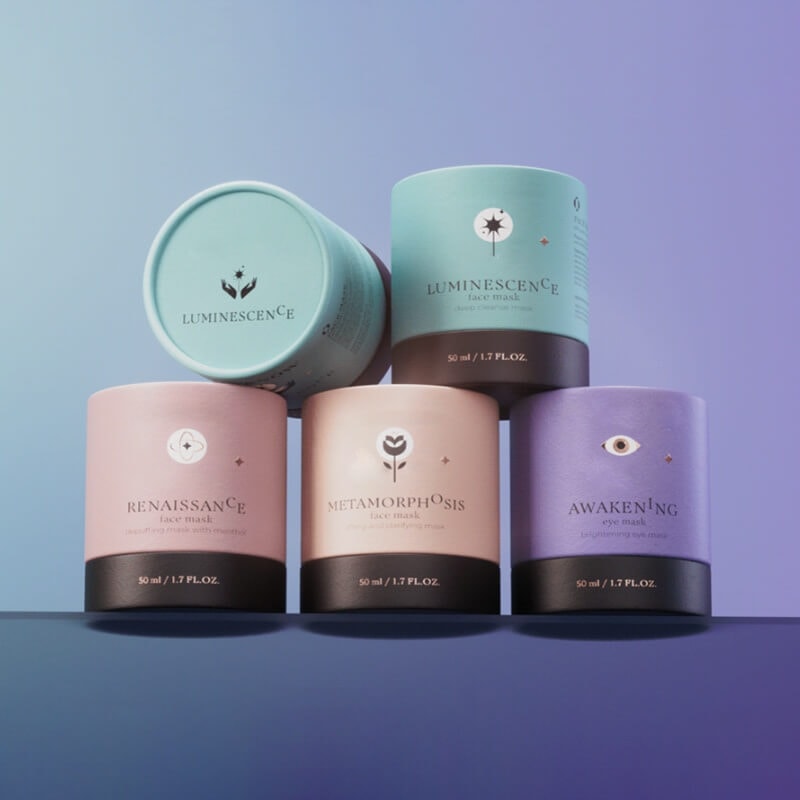
Customizable skincare packaging tubes with protective inserts for secure shipping.
5.4. Paper Bags: Simple, Functional, and Sustainable
For cosmetic brands focused on minimalism and functionality, paper bags are an excellent secondary packaging option. Whether used for retail purposes or as part of an eco-friendly gift set, paper bags can be an effective way to carry cosmetic products while maintaining a sustainable profile. These bags can be made from recycled paper or FSC-certified paper, and they can be printed with eco-friendly inks.
In addition to being sustainable, paper bags are highly customizable, which allows brands to add their logo, brand message, and other design elements that reinforce their identity. The simplicity of paper bags also makes them a cost-effective packaging option, while still providing the strength and durability needed to protect the products inside.
5.5. Display Boxes: A Sustainable Way to Showcase Your Products
Display boxes are another fantastic way to present cosmetic products in a retail environment while maintaining an eco-friendly stance.
Made from recyclable paperboard, these boxes can be designed to hold multiple products or single items in an organized and visually appealing manner.
Display boxes are often used in store displays, trade shows, or at events, where they need to attract attention and stand out.
These boxes are a great way to not only showcase the beauty of your products but also convey your commitment to sustainability.
Brands can incorporate clean designs and eco-friendly materials, such as kraft paper, to create an earthy, organic aesthetic. Just like folding cartons, display boxes are easily recyclable, making them a sustainable packaging choice that also serves a functional purpose in retail settings.
The Future of Sustainable Cosmetic Packaging
As the demand for eco-friendly products continues to grow, sustainable secondary packaging will play an increasingly important role in the cosmetics industry.
By embracing paper packaging options like folding cartons, rigid gift boxes, paper tubes, paper bags, and display boxes, cosmetic brands can significantly reduce their environmental impact while still delivering high-quality and visually appealing packaging.
These eco-friendly options not only meet the expectations of today’s environmentally conscious consumers but also help brands differentiate themselves in a competitive market.
With advancements in sustainable materials and innovative design, it’s easier than ever for cosmetic brands to choose packaging that aligns with their values and the needs of their customers.
As the industry moves toward more sustainable practices, secondary packaging made from paper is becoming a crucial element in a brand’s overall environmental strategy.
In conclusion, secondary packaging is more than just an outer layer for your cosmetic products—it’s a powerful tool that protects, promotes, and elevates your brand.
Whether you’re choosing folding cartons, rigid gift boxes, paper tubes, or eco-friendly paper bags, the right secondary packaging can make all the difference in how your products are perceived and experienced.
As sustainability becomes increasingly important to consumers, opting for eco-friendly packaging solutions not only aligns with modern values but also helps set your brand apart in a crowded market.
By understanding the role of secondary packaging and selecting options that reflect your brand’s identity, you’ll ensure that your products not only look good but also make a lasting impression.
So, take a moment to evaluate your packaging strategy—after all, the right secondary packaging could be the key to boosting your brand’s success and standing out in today’s competitive beauty market.

